 by "ttyymmnn" (ttyymmnn)
by "ttyymmnn" (ttyymmnn)
Published 10/20/2017 at 12:35
 by "ttyymmnn" (ttyymmnn)
by "ttyymmnn" (ttyymmnn)
Published 10/20/2017 at 12:35
Tags: planelopnik history
; Planelopnik
STARS: 10
!!! UNKNOWN CONTENT TYPE !!!
Welcome to
This Date in Aviation History
, getting of you caught up on milestones, important historical events and people in aviation from October 18 through October 20.
!!! UNKNOWN CONTENT TYPE !!!
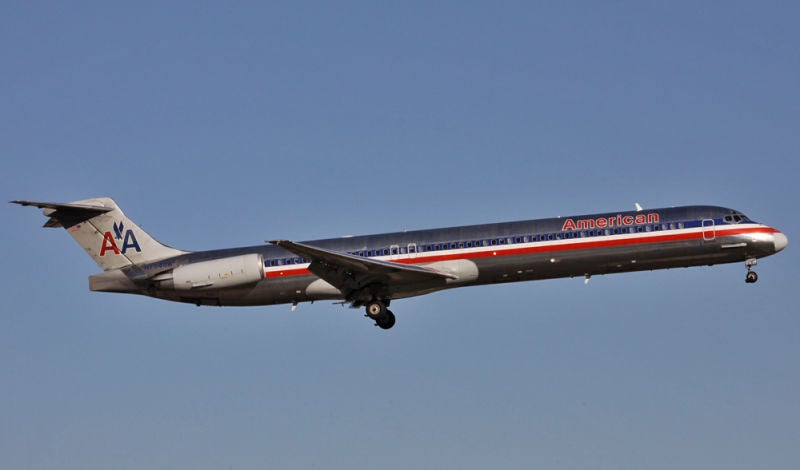
October 18, 1979 – The first flight of the McDonnell Douglas MD-80. In the early days of jet airliner design, aircraft such as the Boeing 707 and Douglas DC-8 provided four-engine prefermance and plenty of seating for large numbers of passengers. But as passenger jet aviation evolved, airlines soon found that they needed smaller airliners that could operate more economically on shorter routes. The Douglas Aircraft Company initially responded to that requirement in 1965 with the development of their DC-9 , a single-aisle airliner that appeared to take significant design cues from the Sud Aviation Caravelle , particularly with its placement of its two engines on the rear of the fuselage. Where the Caravelle had a traditional tailplane, Douglas fitted a T-tail, which helped to keep the tailplane out of the disturbed airflow from the wings and fuselage. The DC-9 turned out to be a success, so McDonnell Douglas (Douglas had merged with the McDonnell Aircraft Corporation in 1967) began to develop variants, stretching the fuselage to accommodate more passengers and upgrading the Pratt & Whitney JT8D engines. By the time McDonnell Douglas reached the 5th variant, the DC-9-50, passenger capacity had grown to 139 seats. But the DC-9 still had room to grow. The second generation of the DC-9 series, originally called the DC-9-80 or DC-9 Super 80, and thus began the MD-80, which simplified the nomenclature and also reflected the newly-merged companies. The MD-80 kept the DC-9’s characteristic five-across seating in coach, but the fuselage was lengthened by just over 14 feet compared to the earlier DC-9-50, allowing for 130 to 172 passengers depending on configuration. New, more efficient and quieter Pratt & Whitney JT8D high-bypass turbofan engines increased the aircraft’s range and allowed a higher maximum takeoff weight (MTOW). Despite changes to engines, wing design, and upgraded cockpit, the MD-80 was not considered a new aircraft by the FAA, and continues to operate under the original type certificate issued for the DC-9. The decision to change the name to MD-80 was purely a marketing choice. Following its maiden flight, the MD-80 entered service with Swissair and Austrian Airlines in 1980, and nearly 1,200 MD-80s were delivered between 1980 and 1999. The MD-80 has been continuously upgraded throughout production, and now exists in the -81, -82, -83, -87 and -88 variants, all of which are essentially similar, but with upgrades to engines or avionics. The Boeing 717 is the final iteration of the series and was initially marketed as the MD-95 before McDonnell Douglas merged with Boeing in 1997.
!!! UNKNOWN CONTENT TYPE !!!
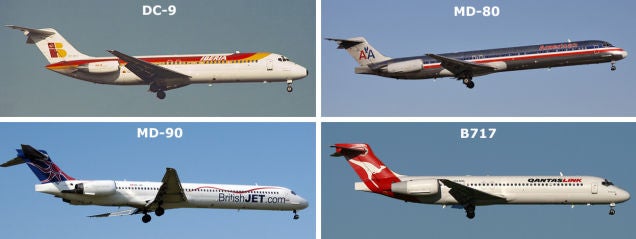
For plane spotters, it can be difficult to identify the different aircraft in the DC-9 series. Here’s a brief guide to identifying the four different significant versions:
DC-9: Short fuselage, no strakes under the cockpit, pointy tail. (The last DC-9 variant, the DC-9-50, was equipped with strakes, but it retained the cone-shaped tail.)
MD-80 series: Longer fuselage, strakes under the cockpit, pinch tail, skinny engines.
MD-90 series: Longer fuselage, strakes under the cockpit, pinch tail, fat engines.
Boeing 717: Shorter body, no strakes under the cockpit, pinch tail, fat engines.
Basically, you can tell the DC-9-10/20/30/40 from the B717 by the tail cone, and the MD-80 series from the MD-90 series by the size of the engines.
(Top photo by the author; DC-9 photo by Pedro Aragão via Wikimedia Commons ; MD-80 photo by the author; MD-90 photo by Arpingstone via Wikimedia Commons ; B717 photo by Ian Lim via Wikimedia Commons )
!!! UNKNOWN CONTENT TYPE !!!
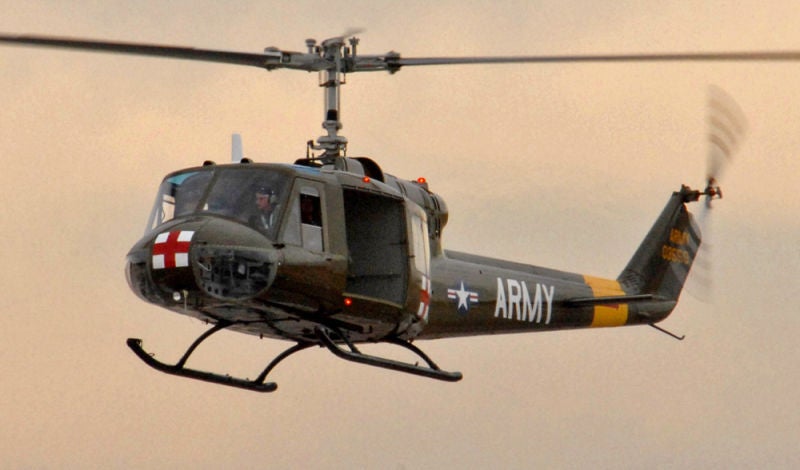
October 20, 1956 – The first flight of the Bell UH-1 Iroquois. Ever since the airplane came to be a weapon of war, certain aircraft have become symbols of the conflicts in which they served. In WWI, the Fokker Dr. 1 Dreidecker and the Sopwith Camel came to symbolize the advent of aerial warfare and dogfighting, while WWII saw the propeller fighter rise to its zenith with famous fighters like the Mitsubishi A6M Zero , Vought F4U Corsair , and Grumman F6F Hellcat slugging it out over the Pacific while the Supermarine Spitfire , North American P-51 Mustang and Messerschmitt Bf 1o9 becoming synonymous with the air war over Europe. The helicopter entered military service at the end of WWII, and their use was greatly expanded in the Korean War. But the Vietnam War became known as the Helicopter War, the first conflict that saw widespread use of the helicopter on the battlefield and that witnessed the maturation of the concepts of vertical envelopment . The ubiquitous presence of cameras in a war zone for the first time brought vivid images of the Bell HU-1 Iroquois, better known as the Huey, into American living rooms, and the Huey became an indelible icon of the Vietnam War. Where early helicopters were powered by piston engines, the arrival of the turbine engine revolutionized helicopter design and, in 1953, the US Army began the search for a new turbine-powered utility helicopter for medevac, instrument training and general utility. No less than 20 companies submitted proposals. In 1955, the Army selected Bell Helicopter to build three prototypes of their Model 204 that were given the military designation XH-40.
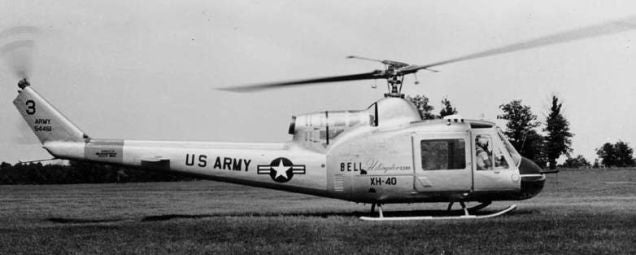
By 1960, the Army had ordered 100 helicopters, and the designation was changed to HU-1 (Helicopter, Utility) and the nickname “Huey” was born, a nickname that stuck despite a change in designation to UH-1 in 1965. While the turbine engine had definite advantages over earlier piston-powered helicopters in speed and lifting power, the original Hueys were still found to be underpowered. To address that shortcoming, the first significant variant, the UH-1B, was developed with a Lycoming T53-L-5 engine that increased the lifting power. Bell also elongated the fuselage to accommodate seven passengers or four stretchers. The follow-on UH-1C saw a still more powerful engine, a new rotor system to combat retreating blade stall , and a longer tail boom. In addition to the Army, the US Marine Corps and US Air Force also adopted the Huey, with each service using a model that was developed for their specific needs. The Huey entered service in 1959 with the 101st Airborne , the 82nd Airborne and the 57th Medical Detachment, but its adoption was originally intended only for evaluation of the new helicopter. However, the rapidly escalating conflict in Southeast Asia meant that the Huey was quickly pressed into combat service in Vietnam in 1962. In addition to its medevac and transport roles, the “utility” part of its designation showed as the Huey was quickly armed with guns and rockets to protect fleets of helicopters dropping troops into landing zones. By the Battle of the Ia Drang Valley in 1965, the Huey had become the modern version of the cavalry horse, transporting soldiers into battle, extricating them when the battle had ended, and whisking away the casualties. The Huey continued to be upgraded throughout its production, and over 16,000 were built between 1956-1987, a number second only to the the Russian Mil Mi-8 . With the introduction of the Sikorsky UH-60 Black Hawk in 1979, the Army began phasing out the Huey, and it was retired from active service in 2005. The Marine Corps continues using a significantly advanced version of the Huey, known as the UH-1Y Venom . (US Air Force photo by Staff Sgt. Jeremy Smith; US Army photo)
!!! UNKNOWN CONTENT TYPE !!!
!!! UNKNOWN CONTENT TYPE !!!
!!! UNKNOWN CONTENT TYPE !!!
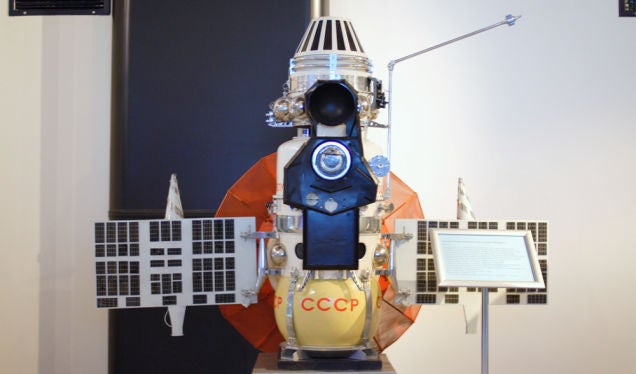
October 18, 1967 – Soviet space probe Venera 4 reaches Venus. Launched on June 12, 1967 atop a Molniya-M rocket, Venera 4 was the fourth of 16 probes launched during the Venera program and the first space to analyze the atmosphere of another planet. As it descended through the Venusian atmosphere, the probe’s sensors indicated that Venus is primarily carbon dioxide with some nitrogen, oxygen and water vapors, and also provided data on temperature and pressure. It is not clear if Venera 4 survived the descent, but Venera 7 became the first spacecraft to land on another planet when it touched down on Venus on December 15, 1970. (Photo by Rave via Wikimedia Commons )
!!! UNKNOWN CONTENT TYPE !!!
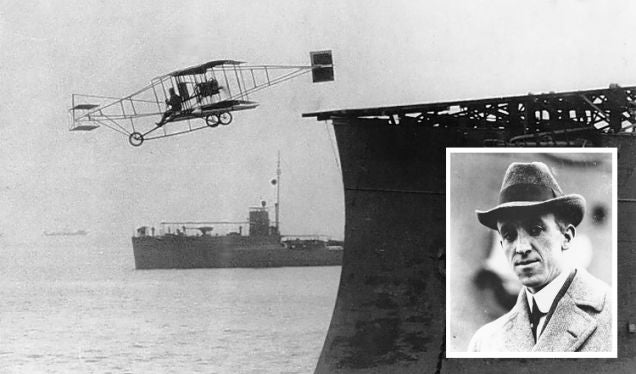
October 19, 1911 – The death of Eugene Ely.
Born in Williamsburg, Iowa on October 21, 1886, Ely began his flying career when he flew—and crashed—a Curtiss biplane purchased by the auto dealer Ely was working for. Undaunted, Ely repaired the plane, and then went to work for
Glenn Curtiss
. When the US Navy began investigating flying from the deck of a ship, it was Ely who made the first successful takeoff from a ship when he flew from the USS
Birmingham
on November 14, 1910. He followed that feat by landing his
Curtiss Model D
onboard the USS
Pennsylvania
two
months later. Though he was turned down for Naval service, Ely continued flying exhibitions, but was killed in a crash and posthumously awarded the
Distinguished Flying Cross
in 1933.
(US Navy photos)
!!! UNKNOWN CONTENT TYPE !!!
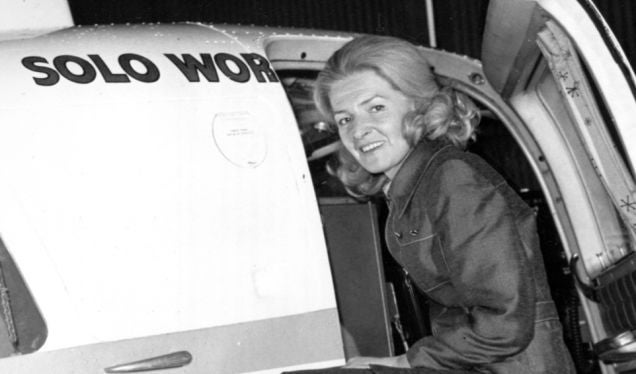
October 20, 1988 – The death of Sheila Scott. Born in England in 1922, Scott (née Hopkins) learned to fly in 1958 and went on to set over 100 flight records, specifically making a name for herself with long distance flights. She first flew around the world in 1966, and repeated the feat in the same aircraft in 1969-70. Her greatest feat of distance flying was a 34,000-mile flight in 1971 nicknamed “world and a half” in which she became the first person to fly over the North Pole in a single-engine aircraft. Scott was named an Officer of the Order of the British Empire (OBE) in 1968. (NASA photo)
!!! UNKNOWN CONTENT TYPE !!!
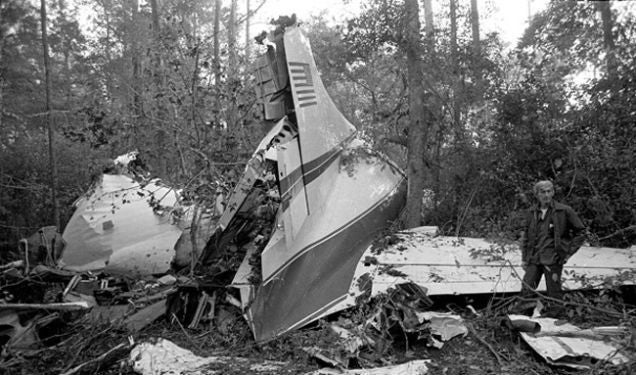
October 20, 1977 – Members of the band Lynyrd Skynyrd are among those killed in a plane crash. While flying to Louisiana after a performance in South Carolina, the band’s Convair CV-300 (N55VM) ran out of fuel and crashed near Gillsburg, Mississippi, killing band members Ronnie Van Zant , Steve Gaines and Cassie Gaines , assistant road manager Dean Kilpatrick, pilot Walter McCreary, and co-pilot William Gray. Other band members, tour manager Ron Eckerman, and members of the road crew suffered serious injuries. The investigation into the crash determined that the fuel exhaustion was caused by the flight crew’s failure to monitor the aircraft’s fuel levels, exacerbated by a malfunctioning engine that burned more fuel than expected. (Photo author unknown)
!!! UNKNOWN CONTENT TYPE !!!
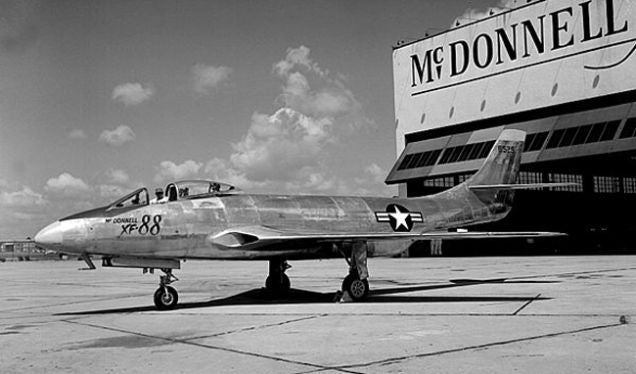
October 20, 1948 – The first flight of the McDonnell XF-88 Voodoo, a fighter designed as long-range escort for US Air Force bombers and envisioned as an aircraft that could carry out a similar role to that performed by the North American P-51 Mustang during WWII. Initially underpowered, afterburning engines were added to increase the aircraft’s speed, but by that time the long range escort concept had been abandoned in favor of high speed interceptors. Though the XF-88 never entered production, it served as the basis for the supersonic F-101 Voodoo which first flew in 1954. (US Air Force photo)
!!! UNKNOWN CONTENT TYPE !!!
!!! UNKNOWN CONTENT TYPE !!!
!!! UNKNOWN CONTENT TYPE !!!
!!! UNKNOWN CONTENT TYPE !!!
!!! UNKNOWN CONTENT TYPE !!!
!!! UNKNOWN CONTENT TYPE !!!
!!! UNKNOWN CONTENT TYPE !!!
!!! UNKNOWN CONTENT TYPE !!!
If you enjoy these Aviation History posts, please let me know in the comments. And if you missed any of the past articles, you can find them all at
Planelopnik History
. You can also find more stories about aviation, aviators and airplane oddities at
Wingspan
.
!!! UNKNOWN CONTENT TYPE !!!
 "Highlander-Datsuns are Forever" (jamesbowland)
"Highlander-Datsuns are Forever" (jamesbowland)
10/20/2017 at 12:51, STARS: 1
I’ve been on Delta’s 717/MD-80's way to many times between SLC and SFO/SJC. They are quick little planes.
 "X37.9XXS" (x379xxs)
"X37.9XXS" (x379xxs)
10/20/2017 at 12:51, STARS: 3
Did you ever wonder how a helicopter could sneak up on anything?
!!! UNKNOWN CONTENT TYPE !!!
 "ttyymmnn" (ttyymmnn)
"ttyymmnn" (ttyymmnn)
10/20/2017 at 13:04, STARS: 0
And loud!
 "DanimalHouse" (thrillerwa09)
"DanimalHouse" (thrillerwa09)
10/20/2017 at 13:15, STARS: 0
Yeah! Reading ....
New, more efficient and quieter Pratt & Whitney JT8D high-bypass turbofan engines”
... made me laugh, not because it’s untrue, but because of how far “high-bypass” has progressed!
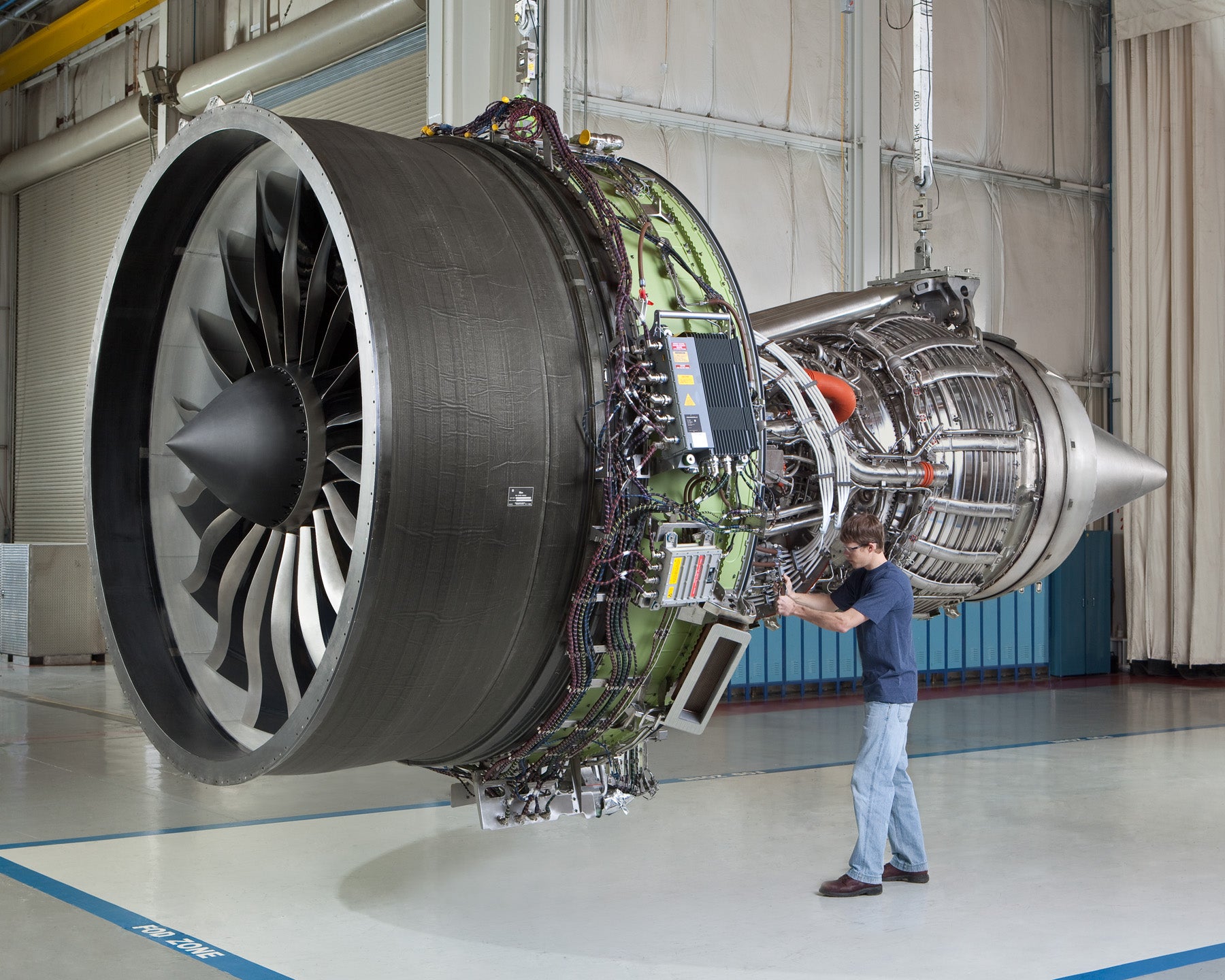
 "Highlander-Datsuns are Forever" (jamesbowland)
"Highlander-Datsuns are Forever" (jamesbowland)
10/20/2017 at 13:24, STARS: 0
I like to sit in the back of the plane too, and forget that there is a big ass engine feet from my head when making seat reservations.
 "f86sabre" (f86sabre)
"f86sabre" (f86sabre)
10/20/2017 at 19:26, STARS: 0
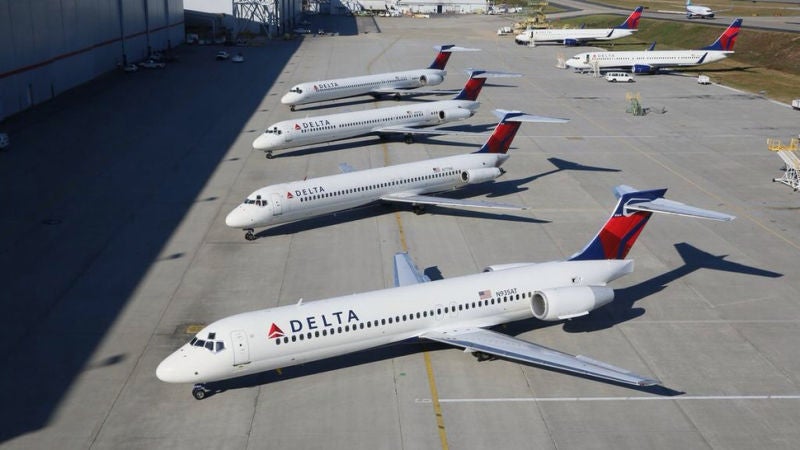
The family. Fun fact: the -88s were delvered as -80s and later upgraded.
 "ttyymmnn" (ttyymmnn)
"ttyymmnn" (ttyymmnn)
10/20/2017 at 20:14, STARS: 1
Nice shot! Here’s one from our visit. Hard to believe that was the summer of 2014.
